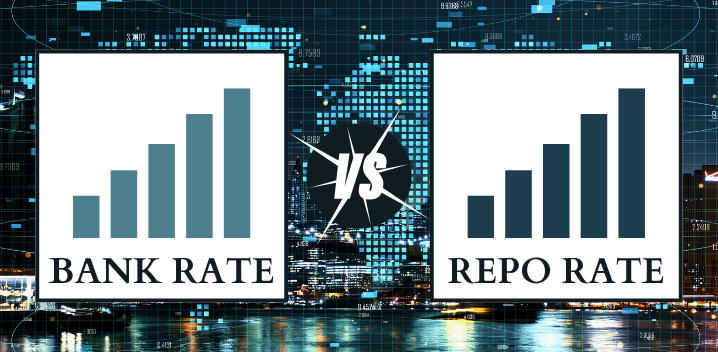Content
- What Is The Repo Rate?
- What Is The Bank Rate?
- Differences between Repo Rate and Bank Rate
- Collateral
- Bank rate vs repo rate: Main difference
- What Are The Current Repo Rate And Bank Rate 2023?
- Conclusion
Bank Rate Vs Repo Rate are the popular rates computed for borrowing or lending activities by commercial and central banks. They are nothing but the lending rates at which the central bank funds financial institutes and commercial banks.
While these rates have sheer differences, one thing that's common is that both are short-term rates. They are sued for controlling cash flows in a market. Most often, they are mistaken as one, but there are a few differences, which this post has compiled.
Before you delve into the details of their significance and definitions, you need to comprehend what they are. On that note, the repo rate is the rate at which RBI lends to commercial banks by buying securities. Contrarily, the bank rate is the lending rate at which commercial banks borrow from RBI without securities. Get an insight into the intricate details of these two terms from the given pointers.
More Articles to Explore
- Difference between NSDL and CDSL
- Lowest brokerage charges in India for online trading
- How to find your demat account number using PAN card
- What are bonus shares and how do they work?
- How to transfer shares from one demat account to another?
- What is BO ID?
- Open demat account without a PAN card - a complete guide
- What are DP charges?
- What is DP ID in a demat account
- How to transfer money from demat account to bank account
Disclaimer: Investment in securities market are subject to market risks, read all the related documents carefully before investing. For detailed disclaimer please Click here.
Frequently Asked Questions
No, the bank rate and repo rate are not similar. In fact, a repo rate is lower than a bank rate. The repo rate needs collateral like bond papers, government securities, etc., but a bank rate loan does not require collateral as it is unsecured.
Yes, RBI can take loans from commercial banks during times when there's excessive liquidity in the market. The banks can reap the benefits by getting the interest. During any high level of inflation, the RBI will increase its reverse repo.
The bank rate and repo rate change every year. The sixth revision occurred on February 8, 2023, which took the repo rate to around 6.50 percent. The prior revisions included the 40 bps increase on May 4, 2022. The most current Repo Rate fixed by RBI happens to be 6.50%.




